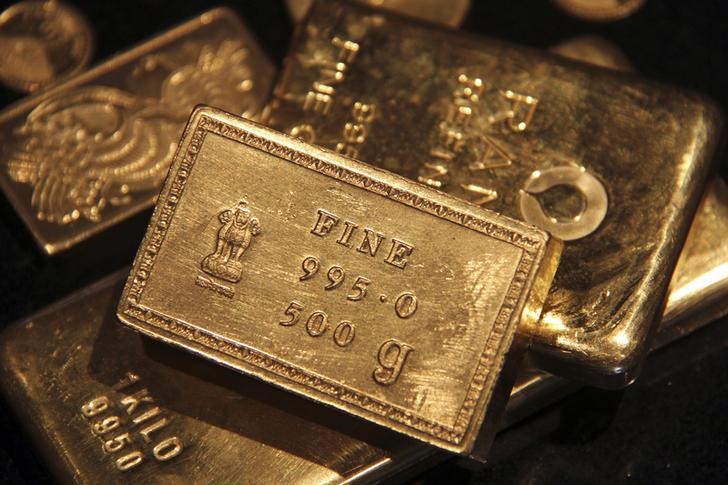By Barani Krishnan
Investing.com - Gold futures settled down another 1.2% on Thursday, accounting for the selling that occurred after the previous day’s official session, as the dollar’s logic-defying strength kept buyers from supporting the yellow metal in a bigger way.
Both futures on Comex and the spot price of bullion traded Thursday above Wednesday’s post-settlement lows. But the strength of the Dollar Index, which reflects the greenback’s performance against a basket of six major currencies, limited the safe-haven’s rebound after Wednesday’s near $43, or 2.1%, drop.
Benchmark December gold futures on Comex settled down $23.80 at $1,946.50.
The spot price of gold, which reflects trades in bullion, meanwhile, rose $18.97, or almost 1%, to $1,947.93 by 3:00 PM ET (19:00 GMT). Spot gold, which typically trades at a discount to Comex, did not fall as gold futures on Wednesday.
Traders said gold needed to post a convincing rebound between overnight Thursday and into Friday’s opening session in Asia to return to the path of recovery.
“Targets on the topside that need to be broken if the buyers are to take back more control,” Greg Michalowski, an analyst posting on ForexLive, said, citing a minimum of $1,970 — Monday’s peak before the rally on Tuesday.
Sunil Kumar Dixit, an independent precious metals chartist, concurred, saying: “Gold needs to hit and hold above $1,970 to return to a position of strength.”
In Thursday’s session, gold traders remained perplexed for a second day in a row with the dollar’s inordinate strength despite U.S. Treasury yields sliding back into the negative and the greenback putting in a weaker performance against a bunch of currencies, from the {{1|euro} to pound and yen.
The Dollar Index is the antithesis of the precious metals and safe-havens trade and its plunge to 27-month lows of 92.11 on Tuesday propelled gold’s return to above $2,000 per ounce. The December gold contract hit one-week highs of nearly $2,025 on Tuesday.
But it plunged the very next day as the Dollar Index jumped after the release of the Federal Reserve’s July meeting minutes that served more as an indictment on the U.S. currency and economy.
Some forex traders said the greenback probably rebounded as short-sellers on the currency exited on seeing the Fed unwilling to control the yield curve of Treasuries — despite the central bank vowing to keep interest rates at near-zero and virtually print as much as money as necessary to help the U.S. economy recover from the coronavirus pandemic.
